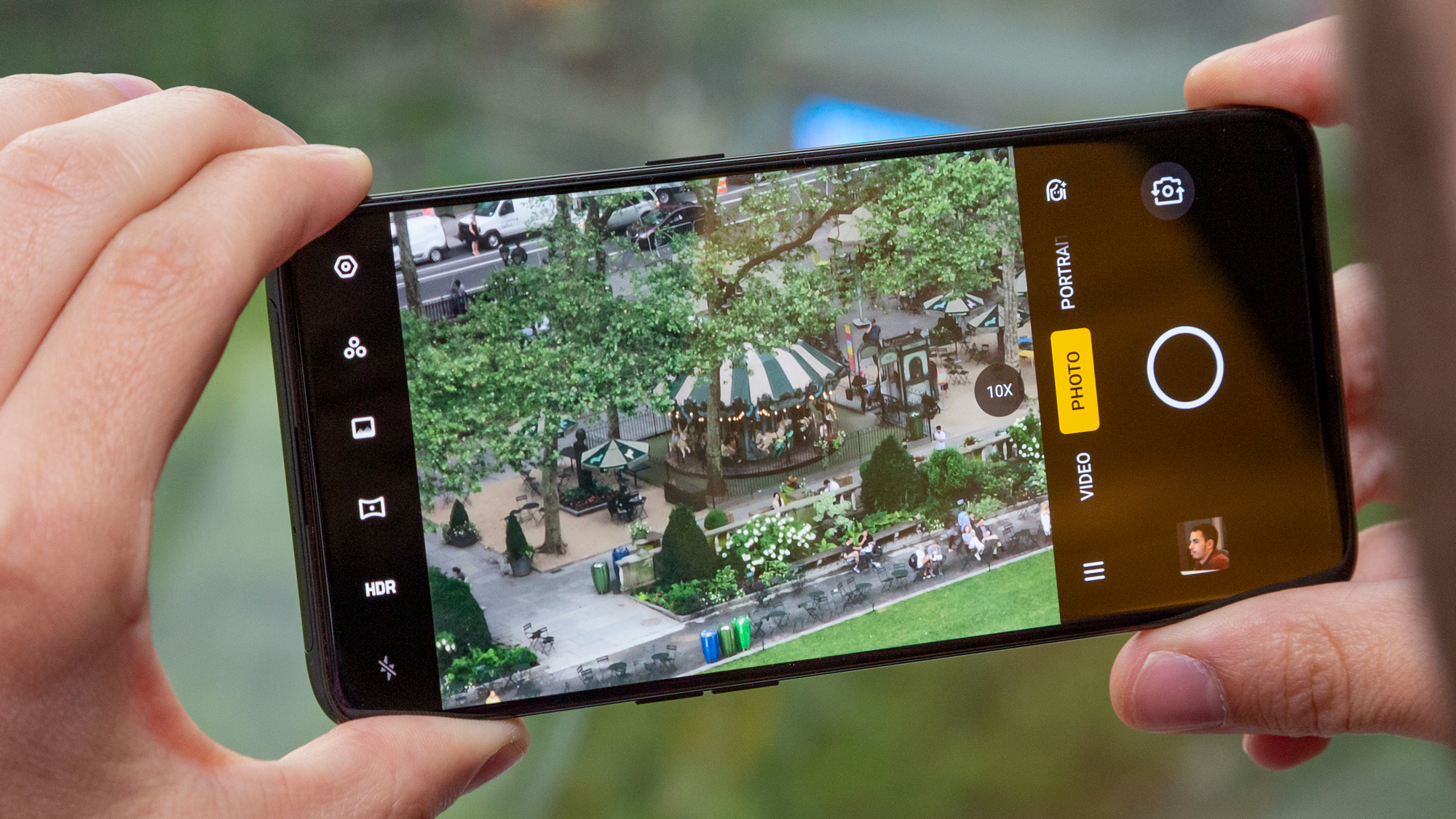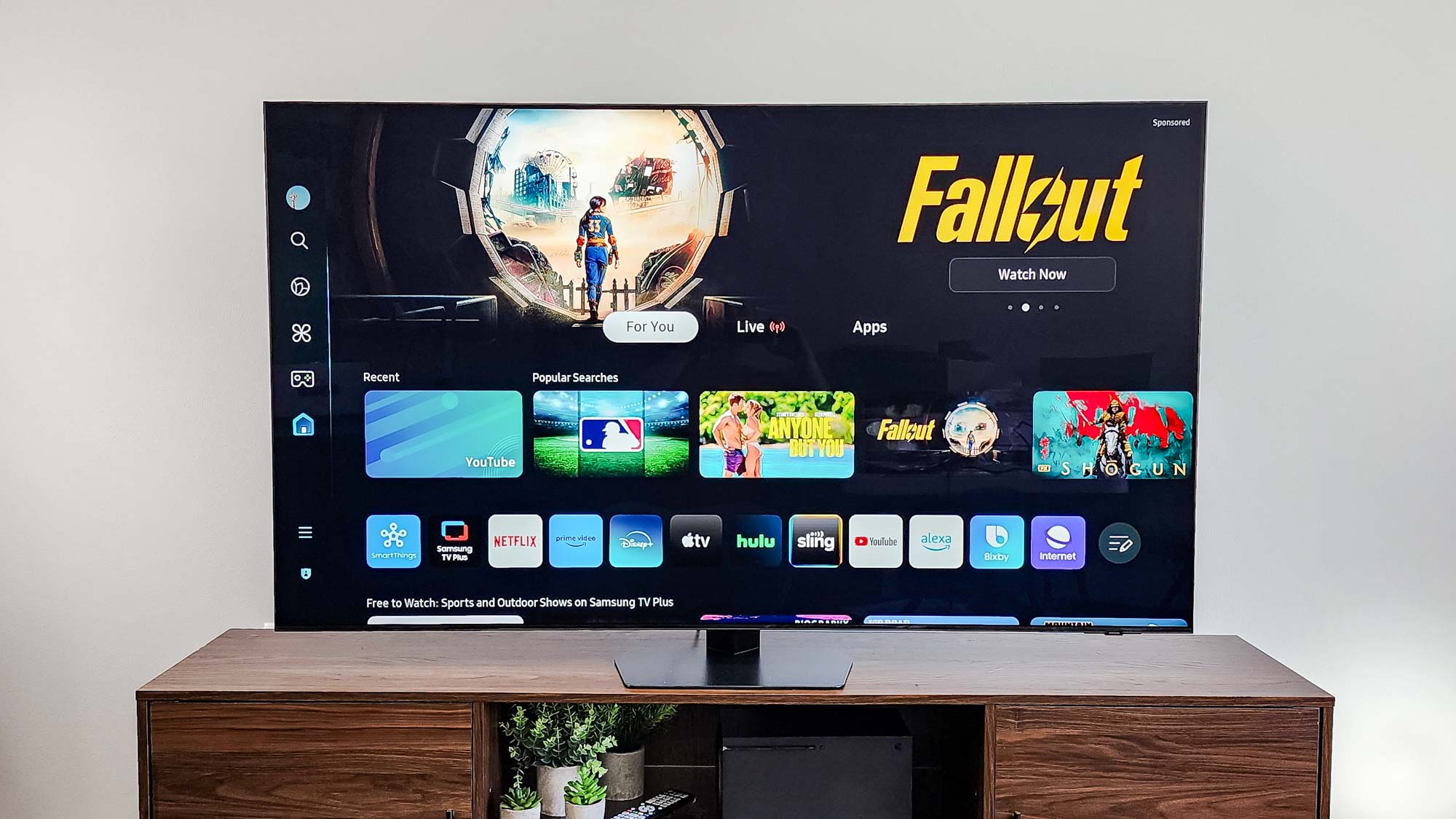Tom's Guide Verdict
If you don't mind the lack of storage options, the Oppo Reno 10x Zoom provides great cameras, strong performance, and a simple but distinctive design inside and out.
Pros
- +
Excellent zoom-lens photography
- +
Long battery life
- +
Pop-up camera means no notch or punch hole spoiling the display
Cons
- -
Screen is flat and dim
- -
Hard to buy in U.S.
- -
Handset is large and heavy
Why you can trust Tom's Guide
Oppo is still a new name in phones for people outside of Asia, even though it's been around for almost 20 years and developed quite a following in and around its home market of China. Oppo's RX17 launched in the United Kingdom earlier this year, but that device had launched in China in August of last year. The Reno, the company's new, photography-focused smartphone, is the first (roughly) simultaneous product launch the make has had, with the debut coming just two months after the Chinese launch.
In the last 12 months, we've seen both the Huawei P30 Pro and the Google Pixel 3 dominate the market for best camera phones, and the OnePlus 7 Pro and Samsung Galaxy S10 have upped the ante for flagship features. The Oppo Reno 10x Zoom, the high-end version of Oppo's latest smartphone product line, doesn't initially look like it could compete with those handsets. But with some neat ideas of its own and a few more cribbed from rivals and stablemates, Oppo has shipped a convincing competitor to the established brands, adding a few features that will really turn heads.
Oppo Reno 10x Zoom Cheat Sheet
- The Reno's cameras are excellent, especially the 10x hybrid zoom lens, which is the best telephoto lens we've seen. Some of the images can turn out a little dark, though.
- The phone's 6.6-inch screen has no notches or cutouts, thanks to the device's pop-up camera, but the display isn't super bright or colorful, and it's flat rather than curved.
- Oppo's ColorOS 6 is a good take on Android Pie: not much bloatware, a clean interface and a few useful unique features.
- The Snapdragon 855 processor plus 8GB of RAM provide decent but not class-leading performance.
- The phone's battery lasts for over half a day's constant use and fills up in minutes. You'll never want for power with this phone.
- The body of the phone isn't very exciting, but it still manages to stand out.
Oppo Reno 10x Zoom price and availability
You can buy the Oppo Reno 10x Zoom and the standard Reno from a handful of online retailers, including Amazon, from £545 (roughly $660 when converted) for the lowest-spec version (6GB/128GB). You can also buy the 5G version on an EE contract in the U.K., in case you like the sound of this phone and want a handset that's ready for the new mobile-data standard.

For our U.S. readers, no normal cell carriers offer the Reno. This means that online retailers like Amazon or Newegg are the best places for importing the device. However, the version of the phone you get may not work with all U.S. cellular networks and you're unlikely to get support from your wireless carrier.
MORE: The Best and Worst Phone Carriers of 2019
Oppo also sells the two other versions of the Reno in the U.K. There's the standard Reno, which starts at £450 and behaves the same as this version but lacks the zoom lens. The budget Reno Z starts at $300 and also cuts out the pop-up camera in favor of a water-drop notch, while lowering the power of some of the interior components. We've yet to get our hands on these versions for a test, though.
Oppo Reno 10x Zoom specs
| Dimensions | 162 x 77.2 x 9.3mm (6.38 x 3.04 x 0.37 inches) |
| Colors | Jet Black, Ocean Green |
| Weight | 215 grams (7.58 ounces) |
| Operating System | Android 9.0 Pie with ColorOS 6 |
| Processor | Qualcomm Snapdragon 855 |
| RAM | 6GB/8GB |
| Storage | 128/256GB |
| Battery Capacity | 4065 mAh |
| Display Size | 6.6 inches |
| Display Resolution | 2340 x 1080 OLED |
| Rear Cameras | 48MP main (f1.7), 8MP ultrawide (f2.2), 13MP telephoto (f3.0) |
| Front Camera | 16MP (f.20) |
Design: Details hidden in plain sight
With the Reno, Oppo has mastered the art of looking inconspicuous. There's no notch or punch-hole, because the Reno 10x Zoom features a pop-up front camera. Instead, you get a clean display, aside from a small chin bezel and a smaller forehead, which also features a small slot for the top speaker.
Get instant access to breaking news, the hottest reviews, great deals and helpful tips.
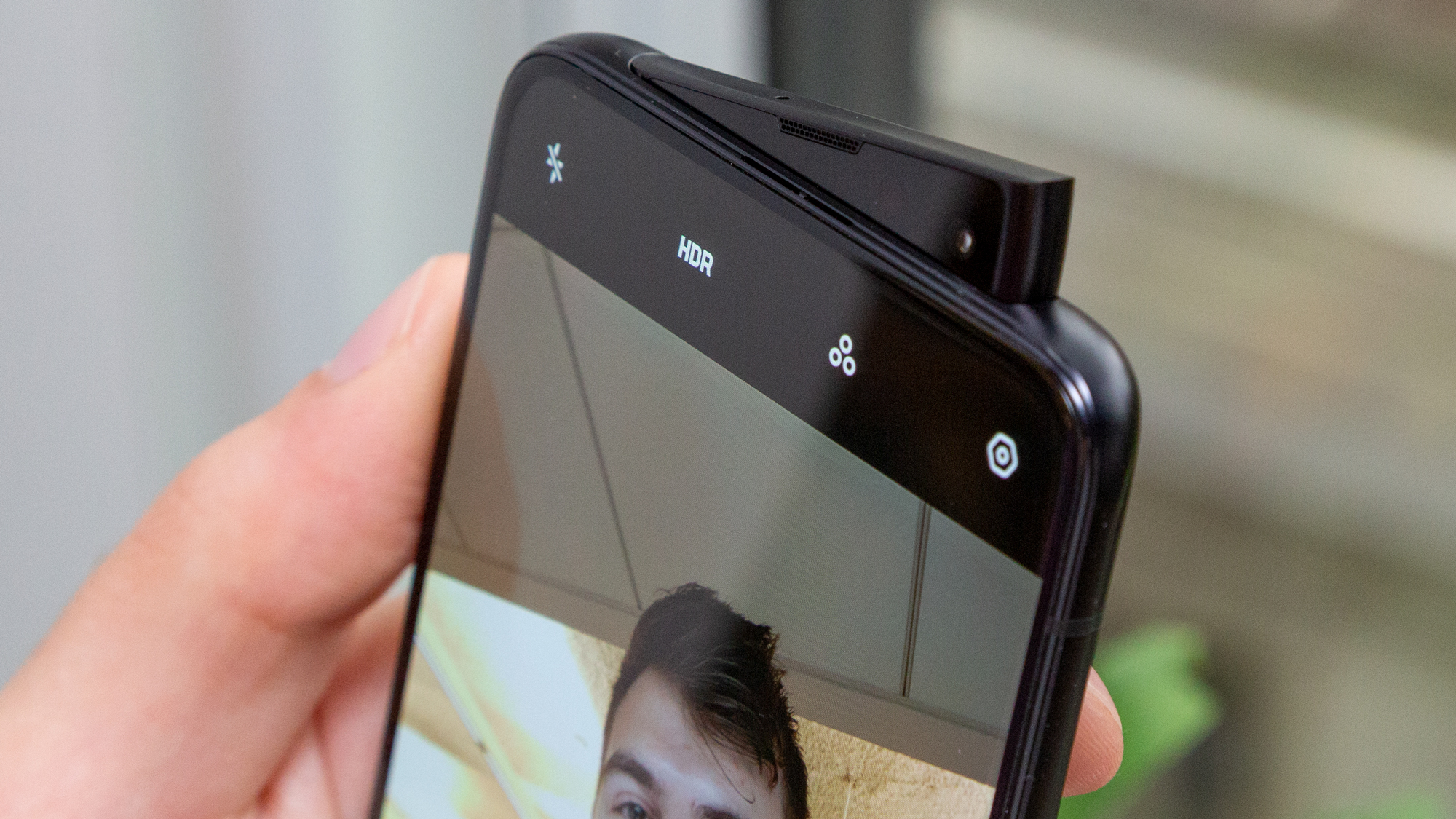
The Reno's most distinct feature is the phone's pop-up mechanism. When you activate the selfie camera, the Reno deploys the module (which houses the camera and top speaker on the front side and a flash/flashlight on the rear side). This happens via a quiet and fast-pivoting mechanism, rather than via the standard, rising module we've seen on phones like the OnePlus 7 Pro. The Reno’s "shark fin" style module is a lot more obtrusive than the 7 Pro's take on the pop up, but the fin is still smaller than the Xiaomi Mi Mix 3's slider mechanism or the Asus ZenFone 6's flipping camera.
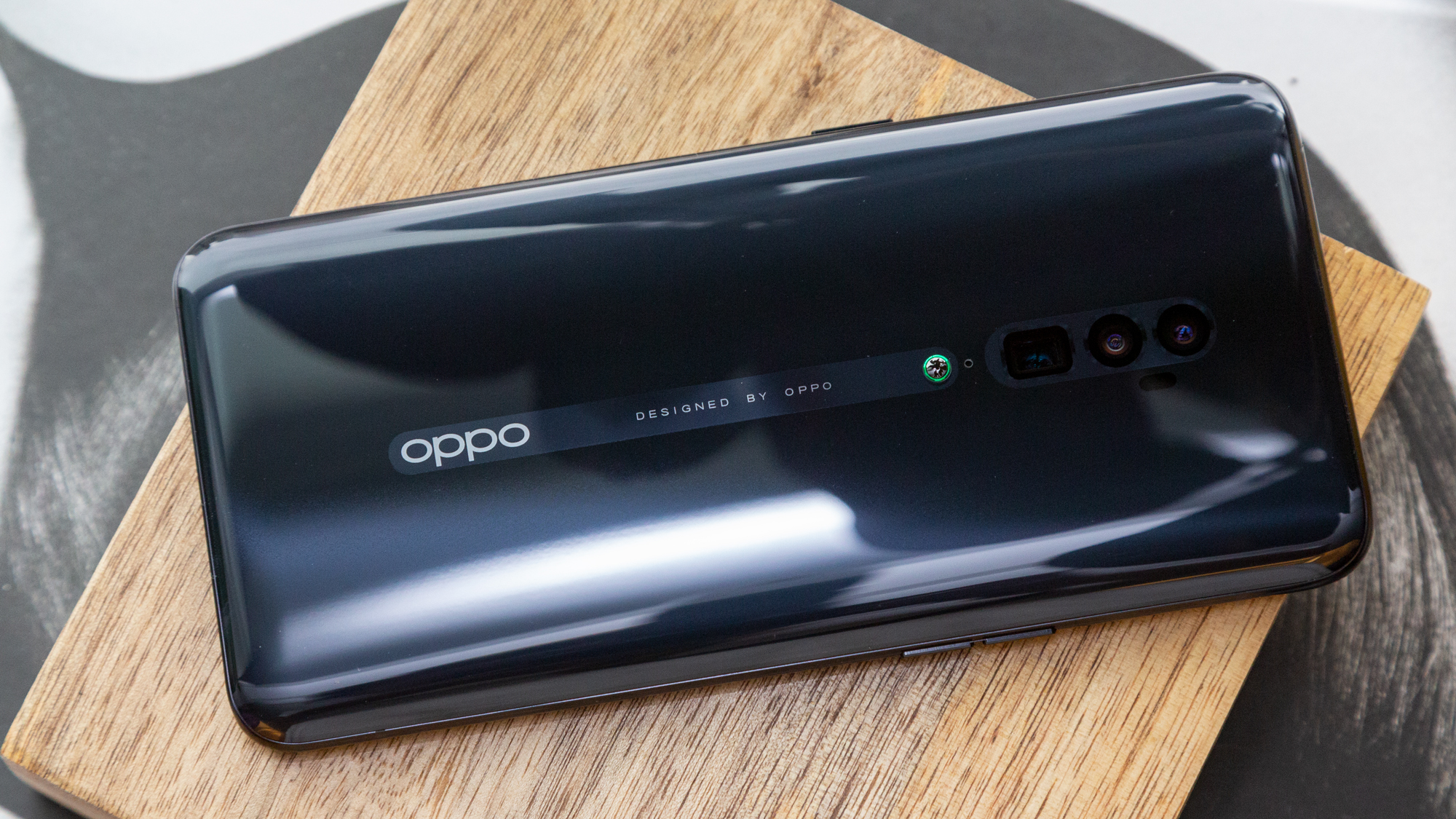

On the back of the Reno, there's a darker, central vertical stripe that bears the Oppo logo and the three rear cameras. This is the most distinct part of the phone, and while I'm not wild about it, it's at least unique to the Reno. You'll also see that the phone's body completely houses the rear cameras, a design that looks a lot tidier than the "camera bump" approach many manufacturers are pursuing, even if Oppo's choice does mean extra width.

The only thing that does extend from the phone's back surface is the O-Dot, a rounded, metal point located a few inches down from the top of the phone. Oppo added this to keep the device slightly raised even when placed flat on its back, protecting it from scratches and dirt. I'm always terrified of damaging phones whenever they're not safely tucked into a case, so I appreciate this gesture toward addressing my very specific neurosis.
A black case comes with the phone to keep the device safe. The case is smooth on the sides and rough on the back, for a good combination of comfort and grip. But the case is open at the top, allowing the pop-up camera to do its work but creating an odd feel when you hold the phone in landscape.
The Reno's something of a heavyweight in smartphone terms, tipping the scales at 215 grams (7.58 ounces). For reference, the OnePlus 7 and iPhone XS Max — both large, 6-inch-plus phones, too — are a shade lighter, at 206 grams. The Mi Mix 3, at 218 grams, is the only comparable phone I can think of that's heavier. Fortunately for the Reno, it doesn't have a slider mechanism, which the Mi Mix 3 does have, so the Oppo phone's mass remains well balanced in your hand.
Display: A little dim, but still colorful
Unlike many other top-tier flagships these days, the Reno lacks a curved screen. Initially, I liked being able to easily find the edge of the phone, so I could draw navigational gestures from there, but over time, I did miss the ergonomics of a curved display. The back of the Reno is curved, so the device at least sits nicely in your palm, even if the edges feel surprisingly sharp in comparison to other phones.
The display itself is a 6.6-inch OLED panel. Sadly, OnePlus kept its 90-Hz screen technology to itself, so scrolling through web pages and apps on the Reno feels normal rather than beautifully smooth, as it does on the OnePlus 7 Pro.

In our testing, the Reno's display managed 171% of the sRGB color gamut, a reasonably high score, but lower than the results from the P30 Pro and OnePlus 7 Pro, which both reached 180%. Oppo's phone also achieved a Delta-E score for color accuracy of 0.16 (lower scores are better), plus an average peak brightness of 416 nits. That's not as bright as the results from either the P30 Pro (444 nits) or the Galaxy S10+ (625 nits).
The lab testing backs up my own experience with the Reno. Watching HBO's horrifying but compelling Chernobyl miniseries often had me turning up the screen's brightness so I could spot the grim details hidden within dimly lit scenes. But outdoors or in fully lit rooms, the drama was engrossing on the phone's display, uninterrupted by notch or punch hole.
When I watched the vivid, but emotionally wrenching anime Neon Genesis Evangelion, the display did much better. With more color around, the screen gets into its stride and I enjoyed watching the show on the Reno, as much as is possible considering Eva's dour themes.
Oppo Reno 10x Zoom cameras
The Reno's cameras are a big deal, so much so that this model is named after its defining feature, a 10x hybrid zoom.
The last phone to make a splash with its zoom abilities was the Huawei P30 Pro, which also promised up to a 10x hybrid zoom. However, the P30 Pro has an 8MP telephoto sensor, while the Reno boasts a 13MP sensor, which theoretically allows for greater quality when pushing the phones to the limits of their magnification. The Reno also has a slightly higher max zoom of 60x, as opposed to the 50x the P30 Pro offers. However, I don't recommend taking pictures at these magnifications, since at that point, both phones are using digital zoom only, so the results won't look as good.
MORE: Best Smartphone Cameras 2019
In a face-off taking pictures of St. Mary's church in central London, I compared the P30 Pro and the Reno at 1x and 10x magnification. At 1x, the ability of the Huawei Super Spectrum sensor to capture extra light compared to other sensors makes for a brighter shot, helping show off the stonework better than the Reno did.
But when we crank up the zoom to 10x, it reverses the story. The larger sensor on the Reno's telephoto lens makes that phone's image brighter, with higher resolution than the P30. Considering the near £300 price difference between the two phones, the Reno's better image at 10x zoom is impressive, even if it comes at the expense of the main lens's performance.
The OnePlus 7 Pro and the Reno, both part of parent company BBK, have the same Sony IMX586 48MP main camera. So is there any difference between the two? It turns out there is.
The Reno's image is once again quite dark, while the 7 Pro's shows off the colors of this tasty apple much more honestly. The image quality is identically excellent, but there are obviously some software-tuning differences between the two manufacturers. This is an easily fixable problem in a photo editor or via an update to the photo app, but the Reno shows a disappointing tendency of failing to make the most of the available light.
The final lens on the back of the Rno is the ultrawide 8MP lens, which is a step down from the 7 Pro's 16MP and the P30 Pro's 20MP lenses. In this comparison with the 7 Pro, using a view over Hyde Park's Italian Gardens, we see far better contrast in the 7 Pro's image — for example, in the marks on the lawn in the foreground or the clouds at the back. The Reno's image is surprisingly brighter than the P30's, but the Oppo phone's lower resolution costs it dearly in overall quality.
Making the 10x zoom a lead selling point for the Oppo Reno is smart, as this is the most unique part of the phone and works very well indeed. The other two lenses are still competitive, but they're not as good as the top-performing rivals I tested, due to what look to be software instead of hardware problems.
Switching to the front camera, the Reno's sensor matches the 7 Pro's 16MP, but again loses to the P30 Pro's 32MP. Comparing the Reno and P30 Pro shows that the Oppo's fin-mounted camera produces a brighter but slightly lower-quality shot than the Huawei's camera, although I can't find major fault with either phone's shooter.
The Oppo selfie camera is slightly slower to deploy than the OnePlus 7 Pro's, but this is probably nothing to worry about. The difference between the Oppo's 0.8 seconds and the OnePlus' 0.64 seconds is minute. However, we can't guarantee that 0.16 seconds won't make a difference if some kind of rare butterfly lands on your shoulder and you want to capture the occasion before the visitor flies away.
Like the 7 Pro, the Reno's internal gyroscopes will detect if the phone's falling, automatically pulling the camera back in to prevent damage. This is particularly important with the Reno, given how much extra hardware is built in to the pop-up mechanism, as was mentioned above.
Software


The Oppo Reno uses Android 9.0 Pie, like all flagship smartphones in 2019 (that aren’t iPhones, of course). Oppo's twist on the theme is the company's ColorOS 6 launcher, which is worth bringing up, because it does a good job of interpreting Google's basic operating system.
The icons and text around the phone are all smartly drawn and easy to understand. You can swap between having an app drawer and not having one depending on your preference, and you can choose between two different grid sizes for your pages of apps and between using virtual buttons or gestures for your basic navigation needs.
As for more unique features, swiping left on the home screen gets you a series of widgets like OnePlus' OxygenOS, rather than Google News. You can also label your notifications as important or not important, keeping the less interesting ones hidden behind a button tap within the notification drawer, also removing them from the status bar.
If you want to keep your apps really safe, you can use the App Lock function to secure them behind a second PIN, which can be different from the one you use to open the phone. It seems unnecessary for me, but perhaps people storing sensitive data or sharing their phones with other people will appreciate this feature.
Finally, without even pressing the power button, you can do things with just a swipe using lock-screen gestures. These are handy, but I found that I managed to turn on the flashlight in my pocket by accident multiple times, somehow performing the V motion with my leg while walking. Maybe it's best to keep these settings off, or to unbind the V motion and use the others.
Oppo Reno 10x Zoom Performance
All versions of the Reno use the Snapdragon 855, with the max-spec version I reviewed featuring 8GB of RAM and 256GB of storage space, a model that costs £650. It's not a huge amount of memory, but it's more than enough for the average user. The other, £545 version comes with 6GB of RAM and 128GB of storage; that model no doubt functions adequately, but it certainly isn't going to top benchmark leaderboards.

The 8GB Reno had a multicore score of 11,027 on the Geekbench 4 general-performance benchmark. That's a little lower than the result from the 12GB version of the OnePlus 7 Pro (11,227), but it beats out the showing from the Kirin 980-powered P30 Pro (9,724), which uses the same amount of RAM. The Reno's result is also ahead of the 8GB Galaxy S10's score of 10,813.
MORE: Best Gaming Phones 2019
While more processing power is desirable, the less-welcome side effect is heat. I used the Reno with the included case during my time with the phone and still found that it became noticeably hot to the touch when I played games like Hitman Sniper or made video calls via Skype. The heat's not uncomfortable, but the gel/graphite/copper cooling-method combination could definitely be more effective. The heat wasn't in vain, at least, as I saw no processing problems while using the Reno under these circumstances.
Sound
The Dolby Atmos-tuned speaker is low down on the list of features Oppo is promoting for the Reno. But for me, this was one of the biggest and most pleasant surprises of the phone. The sound is not only clear, but also very loud, overpowering the noise of the extractor fan over my kitchen stove while I cooked, something that even my laptop struggles to do.
There's no headphone jack available, so you can't add your own old-fashioned, wired headphones. But Oppo provides its own earbuds, with a spare set of gels in case you need something to tide you over until you buy an adaptor or some wireless headphones.
Security

The Oppo Reno's optical fingerprint scanner, hidden beneath the display, is pretty reliable and fast enough in comparison with rivals. I never had any trouble using it; the worst performance moments came when it was slow to unlock, but it never completely failed to register, which I've experienced on other phones, like the Huawei P30.
There's also a face-unlock feature. This uses only the Reno's selfie camera, rather than a complex array of cameras and other sensors, like Apple's Face ID employs. That means that while the Oppo's unlock feature is convenient, it's not as secure as Apple's. At least Oppo's approach isn't slow, which is always a concern with pop-up camera phones, as the fin deploys rapidly when you want to unlock the phone.
Battery Life
You get 4,065 mAh of battery capacity with the Reno. As a result, the battery's life is as long as you'd hope. I was able to take the phone away from an outlet for more than 24 hours
In our official test, which consists of browsing the web over LTE data until the phone dies, the Reno's battery lasted 12 hours and 31 minutes. That's far better than the OnePlus 7's time of 9 hours and 31 minutes and just a little behind the 12 hours and 53 minutes the P30 Pro achieved.
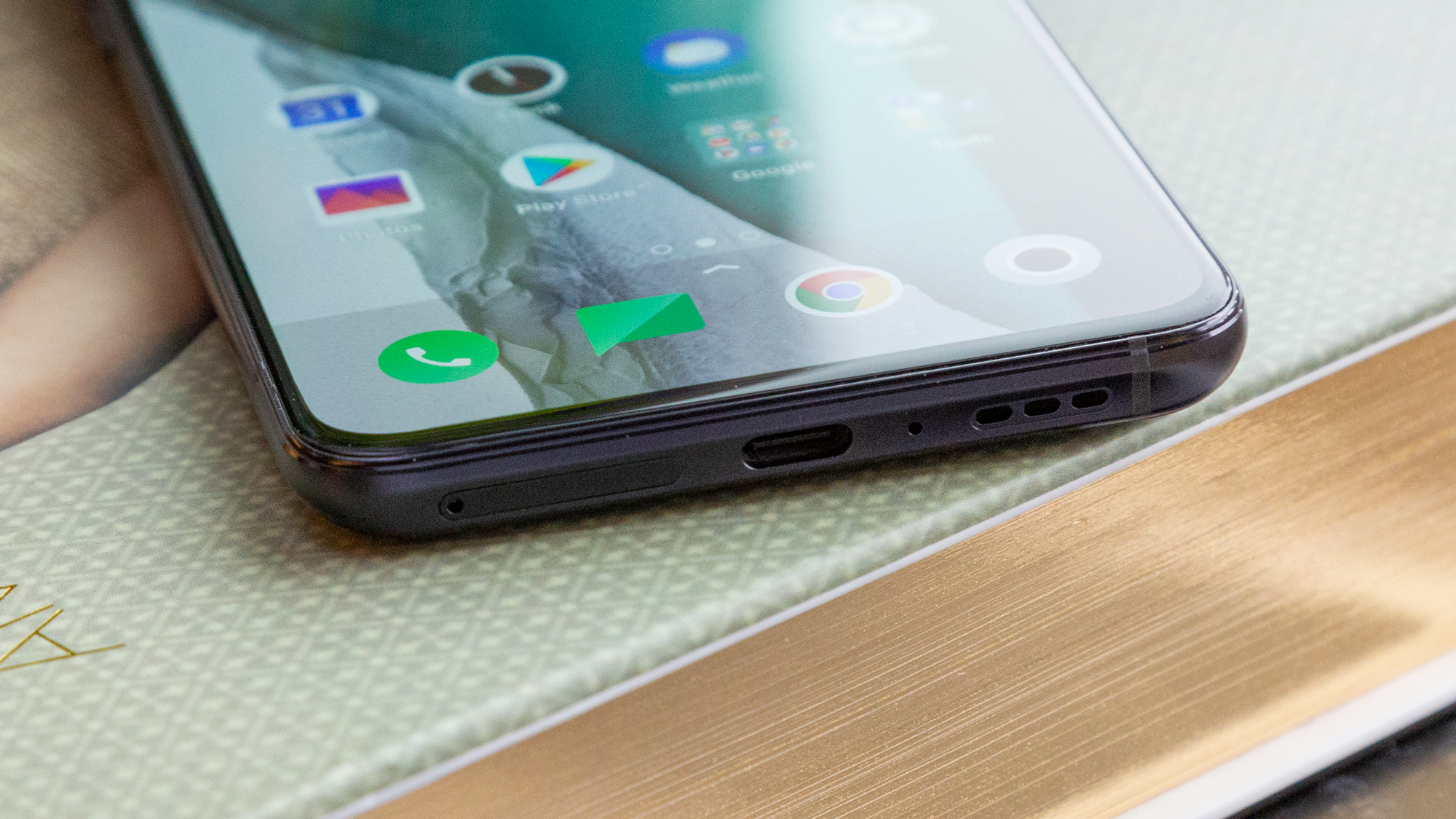
Once the battery dwindles, the phone charges rapidly with Oppo's 30-watt VOOC charging system. Oppo makes no specific promises about the speed the phone can charge, but my own casual test showed that you can go from empty to 25% in 15 minutes, 50% in just under half an hour and 100% in around 70 minutes. That's plenty fast enough, but it is a little slower than Huawei's 40-watt SuperCharge system, which you get on the P30 Pro. The Reno's showing is almost equal to the OnePlus 7 Pro's charging times, and that's unsurprising, because OnePlus' Warp Charge 30 is based on VOOC.
Bottom Line
At £700, the Oppo Reno 10x is on the lower end of what you'd pay for a flagship phone, but it still fits comfortably among more-expensive rivals. The Huawei P30 Pro does almost the same thing as the Reno, but until the U.S. government is satisfied that Huawei as a whole doesn't pose a danger to national security, that phone's not going to be an option for most U.S. consumers, and that's not even considering the extra £300/$360 it costs. That said, until Oppo makes an official launch in the U.S., the two phones are nearly equally difficult to buy and equally expensive due to the troubles of importing the international versions.
The most widely available rival to the Oppo Reno is the OnePlus 7 Pro. Much of the technology and specs are the same (or can be, depending on which version you buy). In the end, this all comes down to whether you value zoom-lens power and extra battery life over a fancier screen, better standard and wide-angle photography, and the unique features in OnePlus' OxygenOS. I believe the 7 Pro is still a better choice for Android flagship value, but the Oppo Reno 10x Zoom is one of the best phones I've tested this year, balancing its few minor shortfalls with some excellent features.

Richard is based in London, covering news, reviews and how-tos for phones, tablets, gaming, and whatever else people need advice on. Following on from his MA in Magazine Journalism at the University of Sheffield, he's also written for WIRED U.K., The Register and Creative Bloq. When not at work, he's likely thinking about how to brew the perfect cup of specialty coffee.
